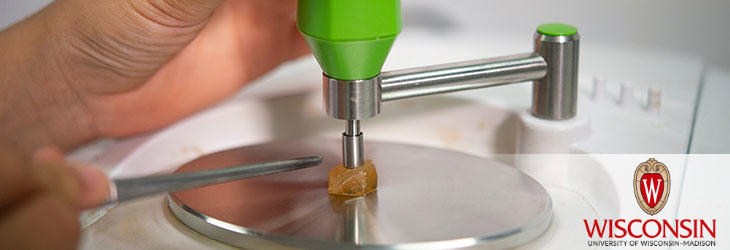Research Tools

A Novel Counter-Selection Marker for Use in Lactic Acid Bacteria
WARF: P160379US01
Inventors: Jan Peter Van Pijkeren, Jeehwan Oh
The Wisconsin Alumni Research Foundation (WARF) is seeking commercial partners interested in a vancomycin-based counter-selection tool for the second cross-over event in homologous recombination, without prior genetic manipulation.
Overview
Lactic acid bacteria constitute a large group of Gram-positive bacteria (over 200 species described), of which Lactobacillus is the largest genus in the lactic acid bacteria group. Members of the Lactobacillus genus are important for industrial (e.g., production of enzymes and biofuels) and medicinal uses (e.g., probiotics). Efficient genome engineering is key to further improve industrial strains, to engineer probiotics as delivery vehicles, and to understand biological function.
Homologous recombination methods (e.g., Campbell method) are widely used, especially for gene insertions and deletions. A typical version of the methods uses a (non-replicating) suicide vector that includes DNA sequences homologous to its target in the chromosome, which is integrated in a single cross-over event that can be detected readily by selecting for antibiotic resistance encoded by the vector. It is subsequently difficult to get the second cross over event that removes the vector and leaves behind either the desired modified product or the wild-type state sequence, depending on where the second cross-over occurs. Some counter-selection strategies have been developed for the second cross-over event, including upp and oroP, but each of these requires the host strain to be engineered (to delete native upp or oroT gene), which constrains their widespread application.
Homologous recombination methods (e.g., Campbell method) are widely used, especially for gene insertions and deletions. A typical version of the methods uses a (non-replicating) suicide vector that includes DNA sequences homologous to its target in the chromosome, which is integrated in a single cross-over event that can be detected readily by selecting for antibiotic resistance encoded by the vector. It is subsequently difficult to get the second cross over event that removes the vector and leaves behind either the desired modified product or the wild-type state sequence, depending on where the second cross-over occurs. Some counter-selection strategies have been developed for the second cross-over event, including upp and oroP, but each of these requires the host strain to be engineered (to delete native upp or oroT gene), which constrains their widespread application.
The Invention
UW-Madison researchers have developed a vancomycin-based counter-selection tool for the second cross-over event in homologous recombination, without the need for genome engineering prior to its application. The inventors engineered a suicide vector to encode DdlA(F258Y) of Lactobacillus reuteri or DdlA of Lactococcus lactis, which causes vancomycin sensitivity when expressed in vancomycin-resistant strains. With this tool, upon confirmation of the single cross-over, cells are cultured for several passages in the absence of any antibiotic to allow a second homologous recombination event to occur. Then the bacteria are cultured with vancomycin, so all surviving cells will have undergone a second cross-over event to remove the vector and its vancomycin sensitivity gene. An in-silico analysis (based on a single amino acid change) developed by the inventors predicted that 70% of the Lactobacillus species encode intrinsic resistance to vancomycin, and thus that their counterselection system can be applied in those species. They confirmed their predictions for Lactobacillus reuteri, L. rhamnosus GG, L. casei, and L. plantarum.
Applications
- New genetic manipulation method for enhancing the genetic modification of strains via the use of suicide vectors and homologous recombination.
Key Benefits
- No need to genetically engineer the host strain prior to application of this counter-selection technology.
- Mutants can be generated in wild-type background
- Allows high-throughput application to multiple strains
- Widely applicable to bacteria that encode vancomycin resistance, which include ~70% of the Lactobacillus species
Additional Information
For More Information About the Inventors
Tech Fields
For current licensing status, please contact Rafael Diaz at [javascript protected email address] or 608-960-9847